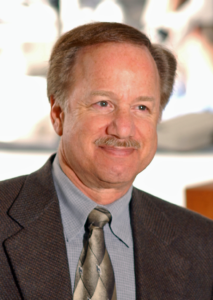A Single Standard for Excellence: Endless Battles in an Endless War

AAE President Dr. Alan H. Gluskin
The current Strategic Plan of the American Association of Endodontists cites in Goal 2 – “The dental profession will value endodontists as partners with advanced expertise in restoring oral health.”
In order for our Association to promote and strengthen our commitment to our plan we must be strong advocates for excellence in endodontic treatment and militant promoters in the right way to deliver care. For these very reasons as individuals and as an Association, we should take every opportunity to increase awareness and acceptance of a single standard of endodontic care that drives excellence. In addition we must be advocates for our specialty in the following ways:
- Increase GP knowledge and education of endodontic case difficulty assessment
- Increase consistency of pre-doctoral endodontic education
- Increase the number of general practitioners receiving endodontic education, including treatment planning at the recognized standard of practice
- Increase partnerships with other dental specialties to promote the training and expertise of specialists in oral health
- Interact as endodontic specialists with external forces that impact the specialty (state boards, insurance, education, DSOs)
- Become a source of information for clinicians and researchers.
- Increase interactions and referrals to endodontists.
There is no doubt in my mind that this is a war of vigilance for our standards….and that battles in that war will never end. Our battles are fought in endless skirmishes that are for the most part civil, but have an endless continuity that requires us to be ever-vigilant. Let me give you a powerful example as I begin this month’s President’s message with a short story that will hopefully make the point of this exchange.
In the May 2020 issue of the Journal of the American Dental Association, a manuscript which I authored with several of my colleagues at the University of the Pacific was selected to be the cover article on that issue of the Journal. It was a distinctive honor when I learned of this taking place and I was truly pleased, as would anyone be in my position. Unfortunately, my joy was short lived when I viewed the cover art that was to feature our article. Our manuscript highlighted the dangers associated with calcium hydroxide delivery through a needle application to lower posterior teeth and the sequelae of overfill into the neurovascular anatomy. We believed it was an important message to all dentists who do root canal therapy and hence we submitted to JADA. On the cover, in the background behind a caricature of a molar tooth with overfilled roots, is a clinical series of radiographs. The radiographs depict a lateral incisor undergoing root canal therapy. To my horror, the series of films show the procedure done without a rubber dam, and the access into the canal is off axis and has nearly perforated the tooth because of mis-direction, weakening important structural dentin. It is a miserable attempt to demonstrate proper care in light of the fact that the intent of the manuscript was to highlight the improper use of a needle application of calcium hydroxide, which can produce extrusion injury that can have damaging and lifelong neurologic consequences for the patient. The cover art violated a number of principles in endodontic treatment that sent a strong message to readers that the American Dental Association finds it acceptable to show an endodontic procedure being done with no rubber dam. Not only is the message the worst message possible and is in direct conflict with our published endodontic standards of practice. The subliminal message is….if the JADA publishes it….it must be OK.
In 2018, we the American Association of Endodontists published two White Papers on Endodontic diagnosis and treatment planning as well as a second paper on Treatment Standards in Endodontics. In 2019, we created executive summaries of both papers in order to send them to third-party providers, schools, state boards and other interested communities. Our standards of practice as the dental specialty of Endodontics are very clearly described in those papers as follows: First, when accessing a pulp chamber, minimize excessive removal of tooth structure, and iatrogenic damage to the tooth. Second, the use of a rubber dam during treatment is mandatory to avoid microbial contamination of the root canal system, limit aerosols, retract tissues, protect the patient from damage by chemicals, and prevent aspiration or swallowing of instruments and materials. In this era of COVID-19 and our concern over aerosols carrying this virus; and in light of good practice standards in endodontics, I stressed to the JADA editors that we were strongly disheartened by this glaring oversight and the message it sends to our profession and the readership of the ADA Journal.
At the beginning of this message I described our advocacy for excellence in endodontic treatment and patient care as a constant series of battles in an endless war of vigilance. I hope in this glaring example, I have made my point.




